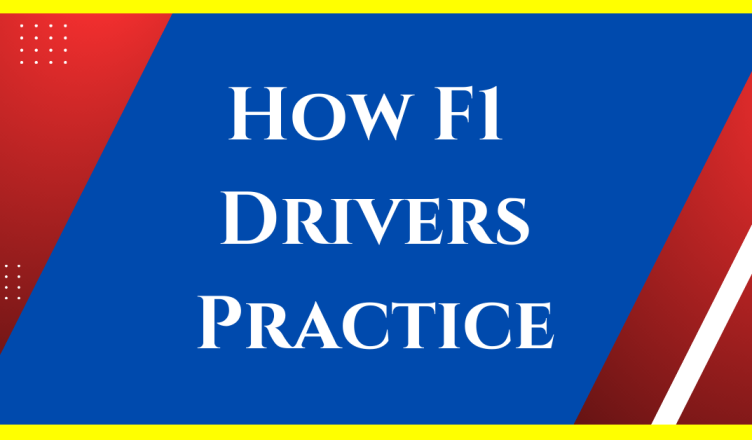Formula One (F1) racing is the pinnacle of motorsport, with drivers competing at the highest level of skill, precision, and speed.
To succeed in F1, drivers must have an incredible level of fitness, mental toughness, and exceptional driving ability.
But how do they hone their skills and maintain their peak performance?
In this blog article, we’ll take a look at how F1 drivers practice and prepare for race day.
How F1 Drivers Practice or Prepare for a Race
Here are the various ways formula one drivers practice and prepare for a race
-
Physical Fitness
F1 drivers are some of the fittest athletes in the world, and they need to be to withstand the extreme G-forces that they experience during a race. They also need to have the stamina to drive at maximum intensity for up to two hours. As a result, physical training is a crucial part of an F1 driver’s practice routine.
Drivers typically engage in a range of activities to maintain their physical fitness. This may include cardio workouts such as running and cycling, strength training to build core muscles, and endurance exercises such as swimming and rowing. Some drivers also use sports-specific training equipment, such as driving simulators, to improve their reaction times and coordination.
-
Driving Practice
Of course, the most critical part of an F1 driver’s practice routine is driving. Drivers must be intimately familiar with their car and its handling characteristics to drive at the limits of their abilities. Therefore, they spend a significant amount of time on the track, honing their driving skills and perfecting their racing lines.
During practice sessions, drivers work closely with their race engineers to fine-tune the car’s setup and make adjustments to improve its performance. They also analyze data from onboard sensors and telemetry to gain insights into their driving and make improvements where needed.
-
Simulator Training
Simulator training has become an essential part of an F1 driver’s practice routine in recent years. Simulators offer a cost-effective and safe way to practice driving, as well as test new car setups and strategies.
Simulators can replicate the physics and handling characteristics of an F1 car with a high degree of accuracy. Drivers use simulators to practice driving on different tracks, in different weather conditions, and with varying fuel loads and tire wear. This allows them to prepare for a wide range of scenarios that they might encounter during a race.
-
Mental Preparation
Driving an F1 car requires immense mental focus and concentration. Therefore, mental preparation is an important part of an F1 driver’s practice routine. Drivers use a range of techniques to stay mentally sharp, including visualization, meditation, and mindfulness exercises.
Visualization involves mentally rehearsing driving sequences and racing scenarios. This can help drivers anticipate and react to different situations more quickly and effectively.
Meditation and mindfulness exercises can help drivers stay focused and calm under pressure. These techniques involve breathing exercises, mental focus, and relaxation techniques to reduce stress and anxiety.
-
Nutrition and Rest
Finally, an often overlooked but essential part of an F1 driver’s practice routine is proper nutrition and rest. Drivers need to fuel their bodies with the right nutrients to maintain their peak performance and recover quickly from physical exertion. They also need to get enough rest to ensure they’re mentally and physically ready for race day.
Drivers typically work closely with nutritionists to develop a diet that meets their specific needs. They also prioritize getting enough sleep and rest between practice sessions and races to stay at their best.
How Often Do F1 Drivers Practice in a Car?
F1 drivers practice in a car regularly throughout the racing season. The frequency of their on-track practice sessions depends on various factors, including the number of races on the calendar, the type of circuit, and the availability of the testing sessions.
Here are some of the ways F1 drivers practice in a car:
-
Race Weekends
F1 drivers participate in three practice sessions during race weekends – two on Friday and one on Saturday. These sessions are usually 90 minutes long, and the drivers use them to fine-tune their car setups, test new components, and get a feel for the circuit.
-
Testing Sessions
F1 teams are allowed to participate in pre-season testing sessions and mid-season testing sessions. These sessions are usually held at circuits that are not on the race calendar and provide drivers with the opportunity to test new car setups, components, and tires.
-
Simulator Sessions
F1 drivers also use simulators to practice driving in different conditions and test new car setups and strategies. Simulator sessions allow drivers to get valuable practice without the need for track time and are a cost-effective way for teams to develop their cars.
-
Private Test Sessions
F1 teams are allowed to participate in private test sessions throughout the season. These sessions are usually held at circuits that are not on the race calendar and are used by teams to test new car components and setups.
Overall, F1 drivers practice in a car regularly throughout the season, either during race weekends, testing sessions, simulator sessions, or private test sessions. By practicing on track and in simulators, F1 drivers can fine-tune their skills and techniques, develop their cars, and gain a competitive advantage over their rivals
Conclusion
F1 drivers have to be among the most skilled and dedicated athletes in the world. They work tirelessly to hone their driving skills, maintain their physical fitness, and stay mentally sharp. By following a rigorous practice routine that includes physical training, driving practice, simulator training, mental preparation, and proper nutrition and rest, F1 drivers are always ready to perform at their best on race day.
